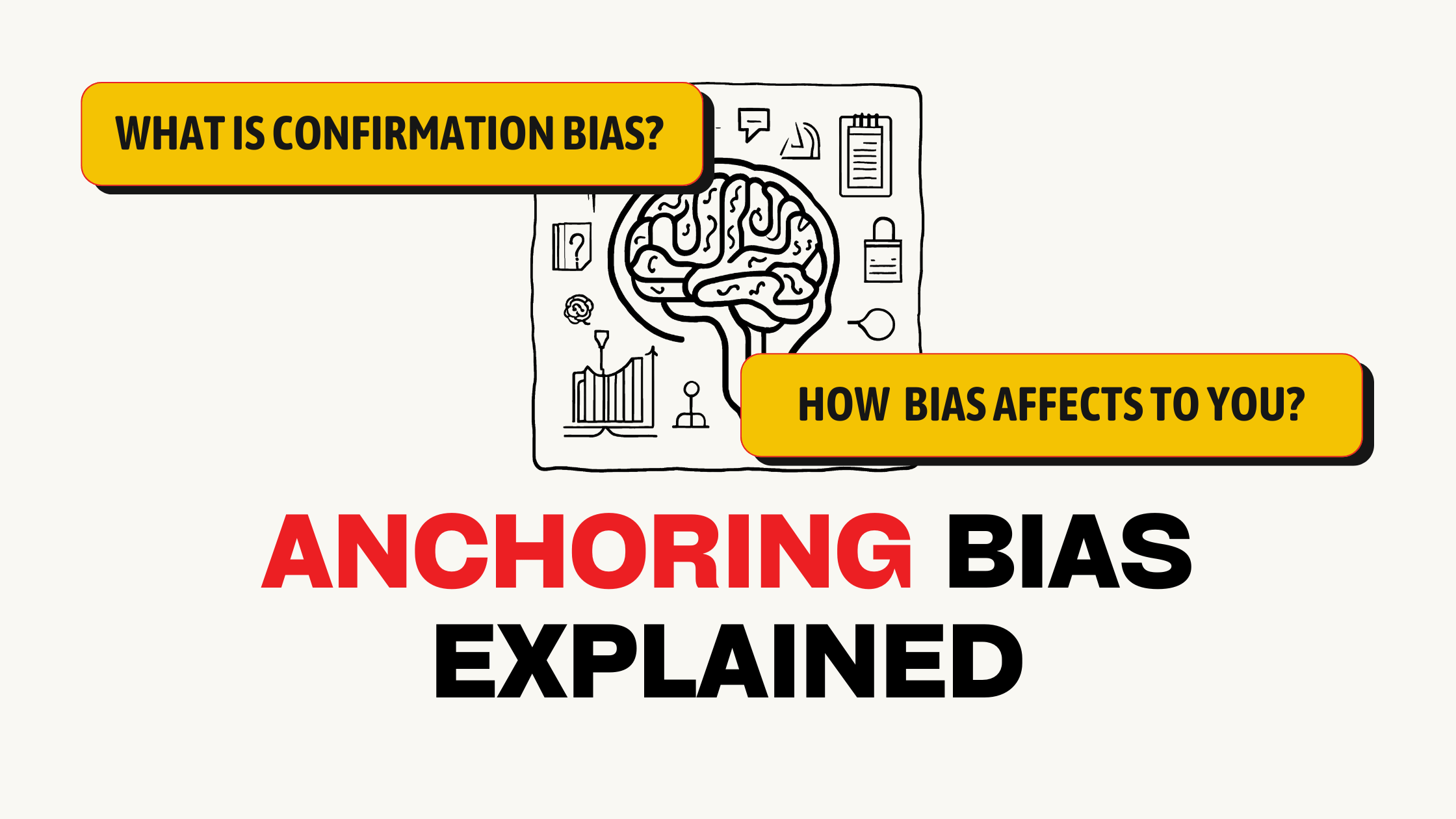When it comes to predicting stock prices, we’d like to believe that our decisions are based purely on data, logic, and careful analysis. However, human psychology often interferes, and one of the most common cognitive biases that can distort our judgment is anchoring bias. In the context of investing, this bias can lead to poor financial decisions by causing us to rely too heavily on specific information—often the first piece of data we encounter—regardless of its relevance or accuracy.
In this article, we will explore what anchoring bias is, how it manifests in stock price predictions, and ways to mitigate its effects to make better, more rational investment decisions.
What is Anchoring Bias?
Anchoring bias is the cognitive tendency to fixate on an initial piece of information (the “anchor”) when making decisions, even when subsequent data is available. In stock markets, investors might anchor their predictions to a previous stock price, an analyst’s forecast, or even a company’s historical performance. The problem is that this initial number or idea often influences future judgments, even if the context has significantly changed.
For example, if a stock was once valued at Rs 100 per share but has recently fallen to Rs 70, investors may still view the Rs 100 figure as the stock’s “true” value. This mental anchor can lead to an unrealistic expectation of the stock’s price rebounding to its previous level, regardless of current market conditions.
How Anchoring Bias Influences Stock Price Predictions
Anchoring bias can distort investment analysis and decision-making in several ways. Here’s how it affects stock price predictions:
1. Overreliance on Historical Prices
- Description: Investors often anchor to historical prices, particularly when a stock was once valued higher. This can cause them to believe that the stock will revert to its former price, even when the company’s fundamentals have deteriorated.
- Example: If a stock’s price has dropped from Rs 150 to Rs 90, an investor anchored to the Rs 150 price may expect it to rise back to that level, even if the company’s earnings have declined or market conditions have changed.
2. Dependence on Analyst Predictions
- Description: When an analyst predicts a stock’s target price, investors might latch onto that figure as the “correct” value, despite new information or changes in the company’s outlook. This can prevent investors from adapting their views based on fresh data.
- Example: An investor might hold onto a stock because an analyst predicted a price increase to Rs 120, even though the company has issued a poor earnings report, suggesting that a price drop is more likely.
3. Initial Purchase Price as a Benchmark
- Description: Investors often use the price they paid for a stock as an anchor when determining whether to sell. If the stock’s current price is below what they paid, they may irrationally hold onto the stock, hoping it will “break even” before selling.
- Example: An investor buys shares of a company at Rs 50 per share. The stock falls to Rs 35, but instead of reevaluating the company’s potential, they refuse to sell until the stock climbs back to Rs 50—regardless of broader market conditions.
4. Impact on IPOs and New Stocks
- Description: When companies go public, the IPO price often becomes an anchor for future predictions. Investors may assume that the initial public offering price reflects the company’s real value, when in reality, it might be inflated due to hype or market enthusiasm.
- Example: A stock that goes public at Rs 40 per share and immediately drops to Rs 30 might still be perceived as undervalued by investors anchored to the original Rs 40 price, even if the drop reflects realistic market pricing.
Why Anchoring Bias is Dangerous for Investors
Anchoring bias can be particularly harmful because it leads to irrational expectations and poor decision-making. Investors might:
- Hold onto losing stocks for too long, waiting for them to return to an anchored price.
- Miss out on profitable opportunities because they are fixated on an unrealistic target.
- Make stock price predictions based on irrelevant or outdated information, ignoring current market signals.
When investors are anchored to a specific number, they may ignore other valuable data points, such as changes in the company’s financial health, broader economic conditions, or competitive landscape. This narrow focus can prevent them from making informed and adaptive decisions.
How to Overcome Anchoring Bias in Stock Predictions
While anchoring bias is a natural part of human psychology, investors can take steps to minimize its impact on their decision-making processes. Here’s how:
1. Focus on Fundamentals
- What to Do: Shift your focus from past prices or analyst predictions to the company’s underlying fundamentals, such as earnings, cash flow, and industry trends.
- How It Helps: This approach ensures that your predictions are grounded in data relevant to the stock’s future performance, not just past numbers.
2. Regularly Reevaluate Investments
- What to Do: Periodically review your portfolio to assess whether your investment thesis still holds. Don’t cling to your original price target or the price you paid for a stock.
- How It Helps: By regularly reassessing your investments with fresh data, you avoid making decisions based on outdated information or emotional attachment to the past.
3. Consider Multiple Data Points
- What to Do: Before making any predictions, gather a range of information—company earnings, market trends, industry growth, and economic indicators.
- How It Helps: Relying on multiple data sources reduces the likelihood that you’ll anchor to any single number and encourages a more well-rounded view.
4. Set Objective Price Targets
- What to Do: Instead of anchoring to historical prices, set realistic price targets based on the company’s growth potential, valuation metrics, and market conditions.
- How It Helps: Objective price targets are less likely to be influenced by emotions and can help guide you to more rational investment decisions.
5. Use Stop-Loss Orders
- What to Do: Implement stop-loss orders to automatically sell a stock if it drops below a certain price, preventing you from holding onto a losing investment due to anchoring.
- How It Helps: This removes emotion from the decision-making process and ensures you cut your losses before they become too large.
Conclusion: Avoiding the Anchoring Trap
Anchoring bias is a common cognitive pitfall that can lead investors to make poor stock price predictions based on irrelevant or outdated information. By understanding how this bias works and taking steps to overcome it—such as focusing on fundamentals, regularly reevaluating investments, and considering multiple data points—you can make more informed and rational decisions.
Remember, successful investing requires flexibility and a willingness to adapt to new information. By freeing yourself from mental anchors, you’ll be better equipped to navigate the ever-changing landscape of the stock market




